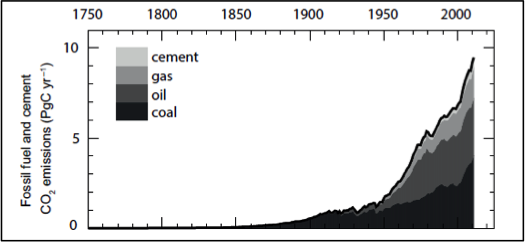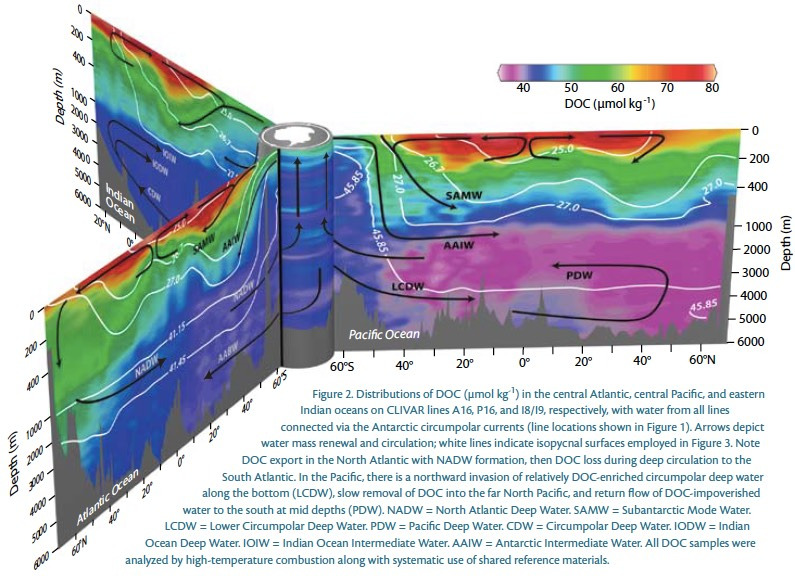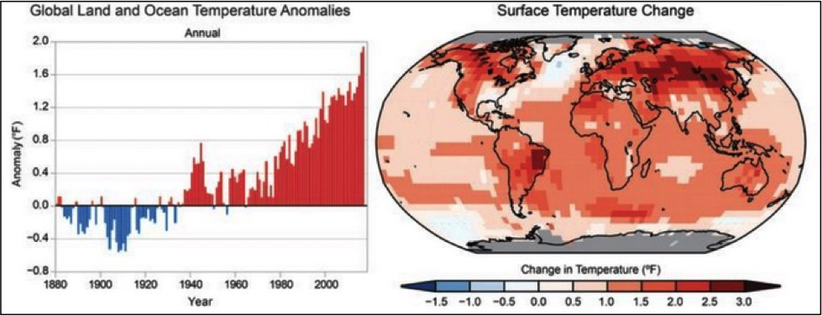
PROBLEM: At ~410 ppm, atmospheric CO2 levels are now 140 ppm above pre-industrial levels of 270 ppm existing in 1750. This excess CO2 primarily arises from fossil fuels, cement production, and changes in land use (e.g. deforestation and agriculture).
The Paris Accord seeks to reduce future emissions from fossil fuels. This is a partial solution and mandatory but still does not remove past emissions, nor deal with other sources of CO2.
These high levels of atmospheric CO2 directly impact the earth’s heat balance and modify other aspects of our environment.
Two actions are now critical to restore climate stability: 1) Future net carbon emissions must go to zero by about 2050; and 2) Past emissions of CO2 must be isolated, buried, or somehow removed from the atmosphere.
Low cost technologies are needed to quickly remove excess CO2 (historic and future) away from the atmosphere. Covering 70% of earth’s surface, the oceans are by far the largest carbon sink – holding 40% of CO2 emissions since pre-industrial times. The oceans have delayed the climate impact from global emissions to date and oceans remain the solution if acted upon.
SOLUTION: Ocean Surface CArbon Relocation or (OSCAR) is Atmocean’s system of wave and salinity-driven downwelling tubes which relocate upper ocean water containing this excess carbon to the intermediate and deep oceans, where it is isolated for decades to centuries, delaying its respiration and allowing greater absorption of atmospheric CO2 in the surface ocean. This technology is not a permanent or answer to allow the continual burning of fossil fuels. Emissions must go to zero as soon as possible. What OSCAR does is extend the runway for humanity to reach zero emissions and locate additional methods to sequester carbon permanently.
OSCAR is the only scaleable system for sequestering gigatons of carbon for a intermediate period of time (decades to centuries). This is urgently needed to mitigate CO2 emissions directly responsible for rapid changes in earth’s climate and yield the necessary time to carry out longer term carbon solutions.
As seen in the graph contained in the OSCAR feasibility study by Sandia National Laboratories (available upon request), each 3.0m diameter pump could deliver up to 10 cubic meters per second from the surface to the outlet at 1,000m depth. Scaled to our planned 2.6m diameter device, over a full year this equals 237 million cubic meters of surface water relocated beneath 1,000m

Applying dissolved organic carbon content of 70 umol/kg (0.84 g/m3) from Hansell et.al. (see below), each OSCAR device relocates 199 tons of carbon (730 tons of CO2) annually.
Widespread deployment of OSCAR on the high seas is feasible because it is simple, durable, and low cost - projected at $40,000 per deployed device. Conservatively allowing for three-year life, the cost per ton of carbon is $67.00 ($18.27 per equivalent ton of CO2). This compares favorably with recent prices on the California Climate Exchange (expected to rise substantially in the coming years).

To the extent possible, each OSCAR device will be constructed from bio-degradeable and/or inert materials. Accordingly, we believe the net environmental and ecologic impact will be strongly positive, compared to accelerating negative impacts due to continued increase in atmospheric CO2 under “business as usual” global emissions.

